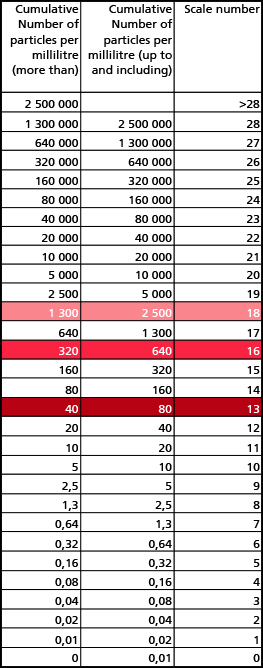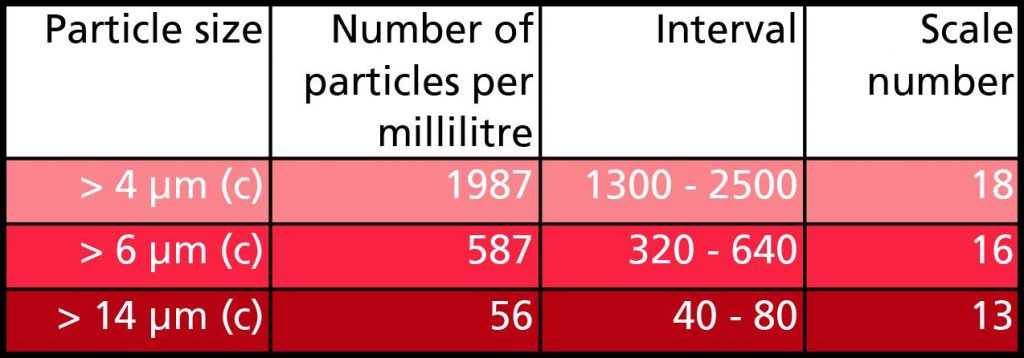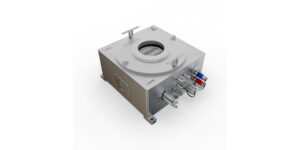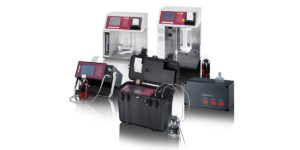Particle measurements as per ISO 4406:2017 are usually displayed as a three-digit code. Code numbers that have been defined as per ISO 4406 are assigned to the measured particle counts for 3 different size channels. Why is this type of display preferred as opposed to just show the particle counts?
The answer is quite simple: Short codes are more concise than long particle numbers and can be displayed more easily. The three-digit display makes it easy to compare measured data or to illustrate cleanliness requirements in a simplified manner. The following table shows a cumulative measurement result of an oil that contains 1,987 particles per millilitre > 4 µm(c). Of these, 587 particles per millilitre are > 6 µm(c). The content > than 14 µm(c) is 56 particles per millilitre.


The next table shows the same measurement result displayed as the three-digit code utilising the ISO 4406 sizes of > 4 µm(c), > 6 µm(c) and > 14 µm(c). The respective cleanliness class is 18/16/13, stating that this particular fluid contains between 1,300 and 2,500 particles per millilitre > 4 µm(c). A class 16 is assigned to the counting range of 320 to 640 particles per millilitre, while the code 13 signifies that the fluid includes between 40 and 80 particles per millilitre that are > 14 µm(c).
© Image by memyselfaneye from Pixabay




